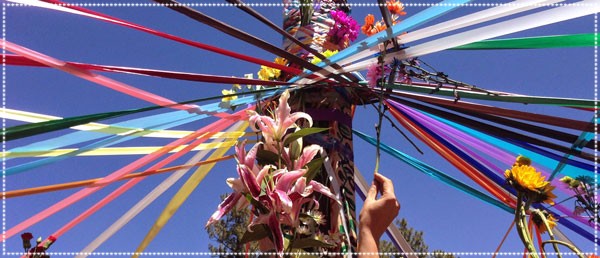May Day, May Pole: these are part of a much more ancient pagan observation and celebration — Beltaine/Beltane for the Celts, Walpurgis Nacht for the Teutons, and Floralia for the Romans. A time of bringing fecundity to the Earth, encouraging the abundance of crops and herds, invoking and honoring fertility and sexuality.
In the Celtic Calendar, this fire festival was to honor Bel, the sun god, warming the Earth goddess alongside her consort the Green Man, Lord of the Greenwood and animals, first in courtship, pursuit, and play. The festivities culminated in the sacred sexual union known as the Sacred Marriage. The green man can still be seen as Robin Hood, the Green Knight, and the goddess as Maid Marion, the Lady Fair.
Bel fires were lit on hilltops and the young people jumped over the ashes to bring them husbands or wives, insure safe journeys, and bring ease in childbirth. Sometimes two fires were lit, and cattle were driven between them for good milk yield. (For a wonderful gallery of Bel Fire photos click here. )
The May Pole, the god’s phallus, was planted in the Earth’s womb with singing and dancing, while colored ribbons were wrapped around it as a form of adoration of the Sacred Union.
Another Northern European tradition was May Riding, featuring a Queen and King as representatives of the Goddess and God, riding into the woods and fields and followed by couples for the purpose of merry-making. As Guenevere sings in the musical, Camelot: “Tra la! It’s May! The lusty month of May! That lovely month when ev’ryone goes blissfully astray!”
